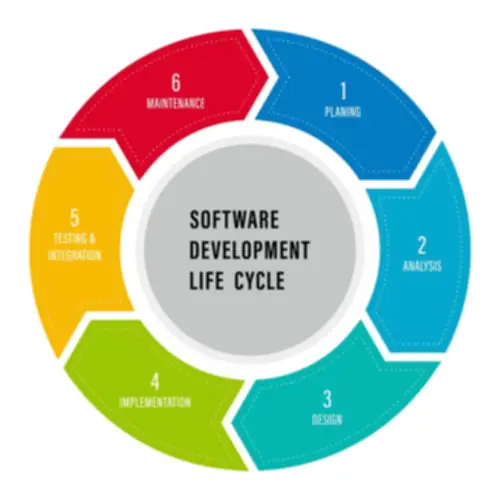The System Design Life Cycle focuses particularly on defining a system’s architecture, elements, and interfaces, emphasizing design specifications. In distinction, the System Development Life Cycle encompasses the entire process of planning, creating, testing, and deploying a system, including design, improvement, and upkeep phases. We at eLuminous Technologies know the significance of a well-executed project management plan. Our dedicated growth staff has a confirmed track document of making cutting-edge software solutions that precisely match the needs and business targets of our purchasers. Earlier, the software program growth life cycle handled security as stand-alone work after testing, which resulted in late discovery or overlooked ai it ops solution vulnerabilities.
Embracing Adaptability And Innovation In Sdlc Methodologies

Suppliers can send digital information to Stratasys Direct, leveraging our huge manufacturing capability and intensive post-processing capabilities. This method eliminates storage costs and ensures quick turnaround occasions for alternative system development cycle parts, preserving customers satisfied and operations seamless. Without figuring out what the shopper desires, the project team can’t ship a suitable product.

The 7 Phases Of The Sdlc Defined
- However, creating wonderful software that satisfies specific enterprise requirements requires a scientific and defined approach.
- It is focused on delivering the software to the end-user or installing it onto the customer’s system(s).
- This phase offers with dealing with issues experienced by the customers/end-users while using the software.
- Every stage starts with a design objective and concludes when the client or developer evaluates the work that has been done.
- Various definitions of the SDLC methodology exist, however most contain the next phases.
It’s a structured strategy to growing high-quality methods that solve real-world issues. Understanding each part is thus important for builders, project managers, enterprise analysts, QA, and the IT Team. Considered one of the most well-liked methodologies for SDLC, the Spiral mannequin is an distinctive answer for danger dealing with. For organizations poised to embark on or refine their software development journey, the insights provided herein serve as a foundational information to navigating the complexities of SDLC. If you seek to leverage the complete spectrum of advantages that a tailored SDLC method brings to the table, including customized IT solutions that handle your unique challenges and goals, we encourage you to succeed in out. Our expertise in providing bespoke IT companies ensures that your developmental endeavors are supported by a sturdy framework designed for achievement.
The Best Tech Stack For Creating Every Sort Of Software Program In 2025

The testing stage entails rigorous scrutiny of the developed system to uncover any safety issues or defects. It’s a critical phase the place the system is put by way of varied exams to validate its performance, system efficiency, and security, guaranteeing that it meets all the specified requirements earlier than deployment. For any system growth project, clarity and precision in setting targets are paramount. Creating a software requirement specification document is crucial for outlining what the system is supposed to attain and the issue it goals to resolve.
Selecting The Best Sdlc Model On Your Project
The SDLC may turn into rigid during development, significantly if the necessities alter. This inability to adjust could lead to a finished product that’s unable to satisfy the client’s evolving needs. While documentation is essential, this method’s concentrate on complete records can result in excessive paperwork.
Once the code is absolutely developed, testing is carried out in opposition to the necessities. To produce high-quality software on time, improvement groups need to comply with highly structured testing and processes to extend efficiency and cut back the prospect for bugs to happen. These processes are referred to as Software Development Life Cycles, and heaps of such methodologies exist.
Containers provide practically identical internet hosting environments, no matter the place they are deployed. If an software ran in a container efficiently through the testing stage, groups can count on it to function appropriately during deployment as properly. In addition, groups should set clear expectations about coding type and conventions to guarantee that all of the code is constant. Either means, it’s important to ascertain clear processes for managing code as builders write it during implementation, particularly if there are a number of builders working at once.
The conceptual design stage is the stage the place an recognized want is examined, requirements for potential options are outlined, potential options are evaluated, and a system specification is developed. The system specification represents the technical requirements that may present general guidance for system design. Because this doc determines all future growth, the stage can’t be completed till a conceptual design evaluate has decided that the system specification properly addresses the motivating want. In essence, whereas System Development Life Cycle provides a holistic view of the system improvement course of, System Design Life Cycle narrows its focus to the detailed planning and creation of the system’s design parts. Both are integral to successful system growth, with the latter enjoying an important role in translating high-level requirements into actionable design parts.
The construction of the SDLC helps streamline projects and remove guesswork. With clear documentation to guide progress between stages, the SDLC can cut back software program production time and boost development productivity. In the scrum framework, development groups are damaged down into smaller units, led by a “scrum master.” The scrum grasp solutions to the product owner, who also acts as the purpose of contact between each scrum group. These small groups are inspired to take ownership over the task assigned to them throughout every sprint, permitting for adaptability and creative solutions while not having to cease and anticipate feedback from other stakeholders. DevOps is a software growth methodology that accelerates the supply of high-quality purposes and services by combining and automating the work of software program growth and IT operations teams.
In some fashions and methodologies, staff members are inspired to form small, highly collaborative groups to search out inventive options to development problems. The DevOps lifecycle has its own steps, steps which are just like those of the SDLC. A simplified way to put it is that DevOps takes the steps of the SDLC and reconfigures them to create a continuous cycle for software improvement and enchancment. After the development staff has created a practical piece of software, it’s now time to refine it to remove bugs and search for alternatives to reinforce the final product.
The stage generates a comprehensive project plan which outlines the project’s schedule, finances, milestones, and deliverables. The plan serves as a framework for the project and guides the event processes in subsequent phases. This doc outlines the project’s scope, objectives, goals, expected deliverables, and timelines.
While it may result in faster initial coding, the dearth of construction can outcome in challenges, necessitating adaptability to refine the product towards the desired outcome. The V-model obtained its name because of its shape—it appears just like the letter “V.” In software program testing, the V model is an SDLC paradigm that uses a hierarchical approach to test execution. It also goes by the name of a Verification and Validation model, and it handles testing at each stage of improvement. The waterfall paradigm is helpful when the project objectives and needs are clearly defined.
The use of AI monitoring techniques ensures that industry requirements are at all times met. When used correctly, the system improvement life cycle can allow the maximum diploma of documentation and administration management. Everybody sees a transparent plan for attaining the goal and agrees on it upfront. This method emphasizes danger identification and mitigation methods early within the course of. By assessing potential challenges upfront, teams can develop contingency plans, minimizing the influence of unforeseen issues. As a start-from-scratch SDLC approach, the Big Bang mannequin does not adhere to any specific method, and very little time is spent on planning.
Transform Your Business With AI Software Development Solutions https://www.globalcloudteam.com/ — be successful, be the first!

No Comments